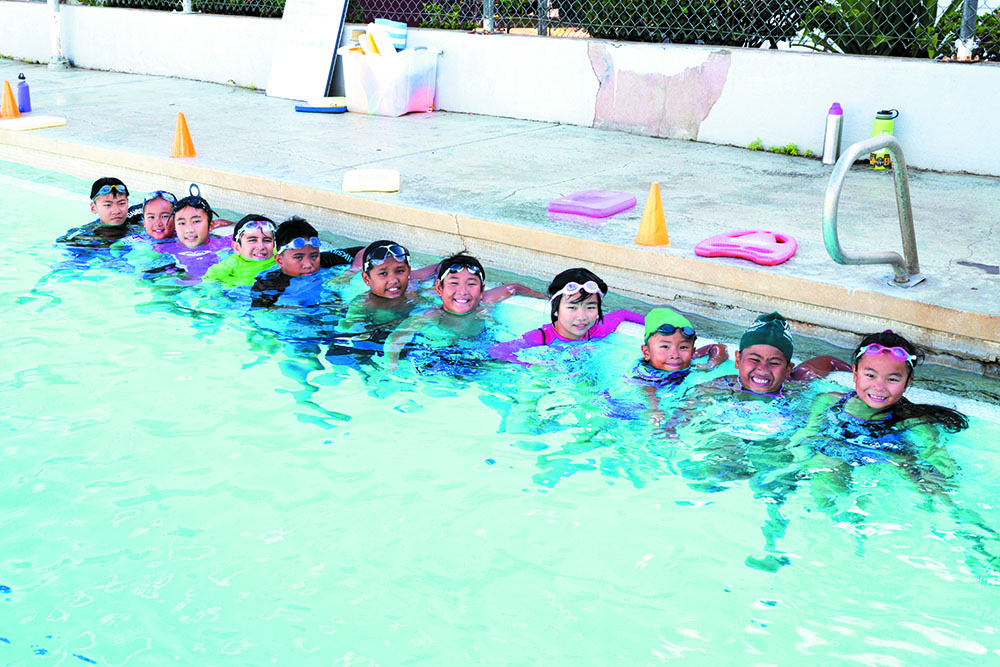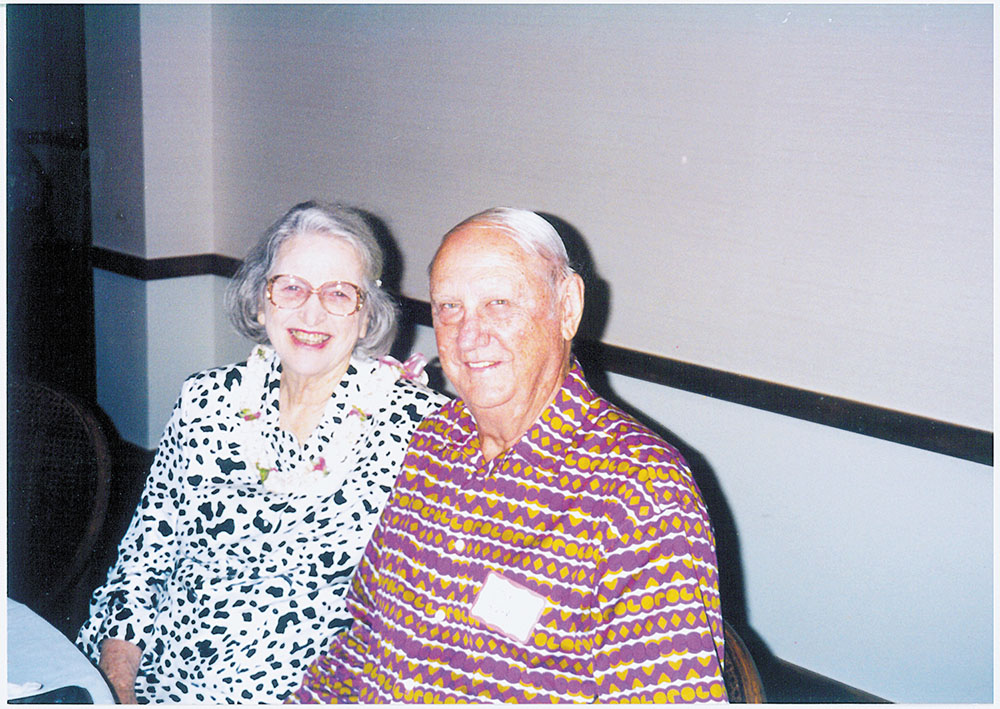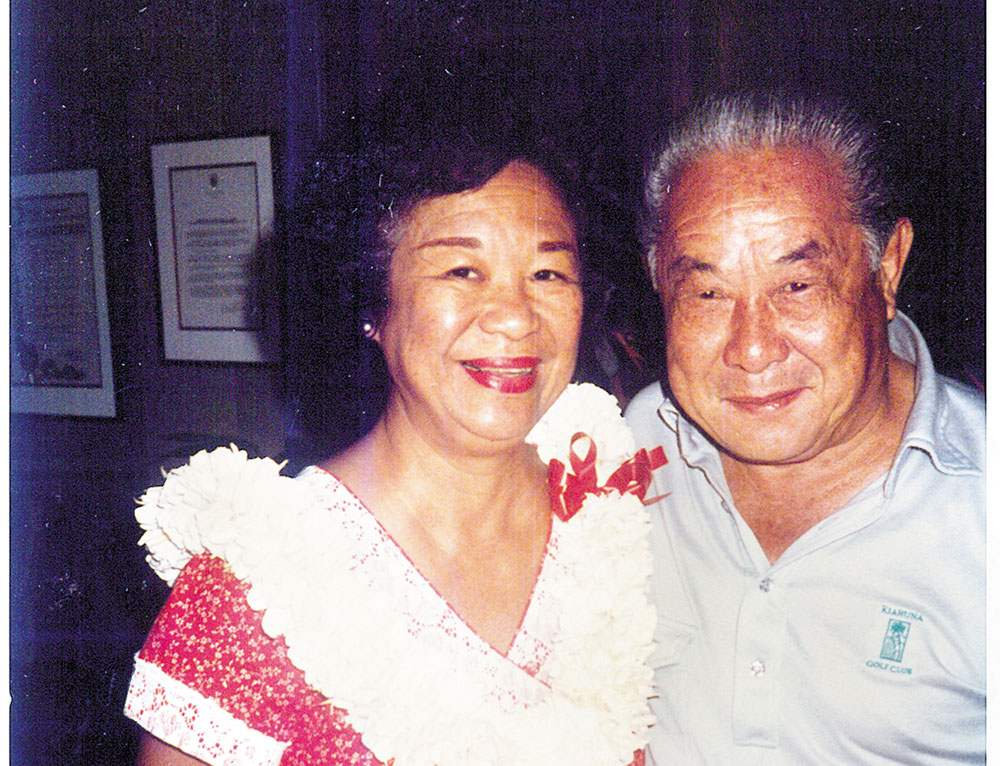For the People
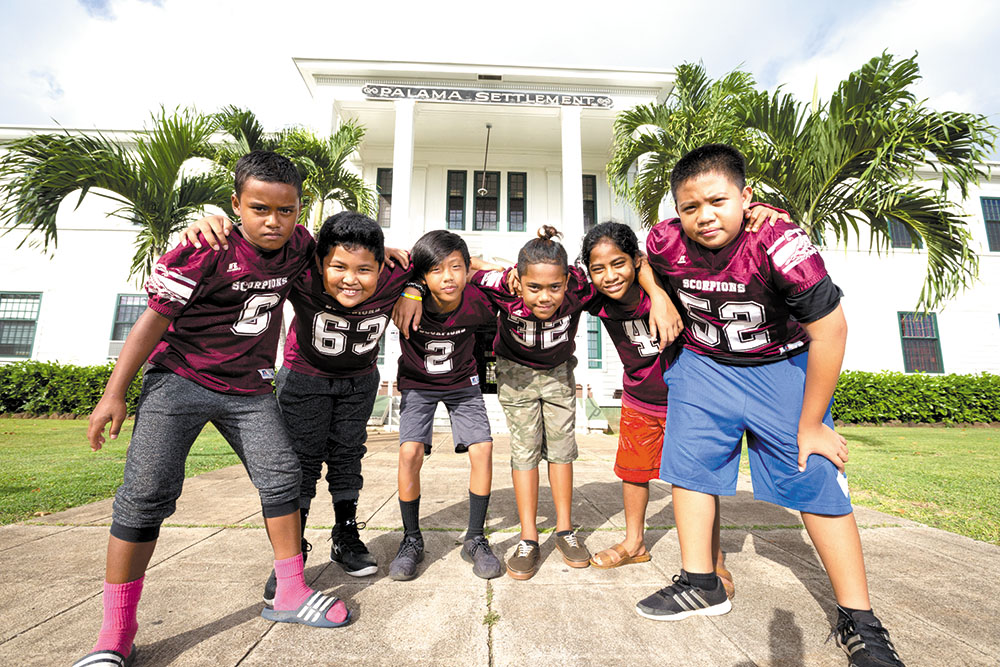
(from left): J-Joe Joseph, Ethan Ramos, Kein Kahele, Ezekiel Kapahua, Vanden Tomas and Kal-el Bareng
Palama Settlement has been serving the people to improve their lives for 120 years, and its Malama Palama fundraiser Oct. 1 will help to continue its efforts
Palama Settlement’s origins can be found in the ashes of the last great fire on Oahu, bursting forth on the scene like ohia from a lava flow. The year was 1900, and cases of bubonic plague were sprouting like mushrooms in the dank, crowded streets of Chinatown. So the city tried to solve it with a few carefully set fires to burn out the rats that have been targeted as patient zero for plagues for time immemorial.
But fire knows no bounds, and soon the entire area east of Nuuanu Stream, an area populated with mostly destitute Hawaiians and Chinese residents, was little more than charred buildings and smoke-choked skies. Thousands were displaced and shuffled across the wooden planks that passed for bridges in those days to the west side of Nuuanu, an area known as Palama. It had been a quiet area, with a few farmers tending to taro patches and rice paddies, but now it teemed with the impoverished and recently rendered homeless.
Hastily thrown-together tenement housing was erected, literally just a roof over their heads, and hundreds of children had little to do but find trouble in all the ways that idle hands can discover it.
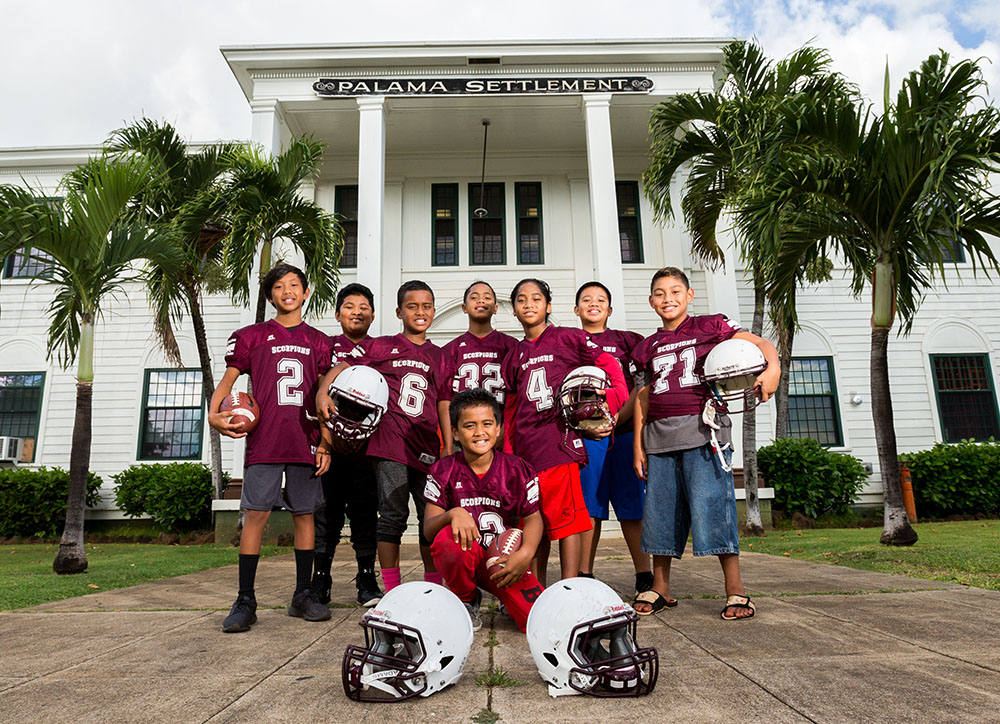
(from left) Kein Kahele, Ethan Ramos, J-Joe Joseph, Ezekiel Kapahua, Joychy Joseph, Vanden Tomas, Kal-el Bareng and Elijah Moses
Huddled in the midst of this migrant invasion, which one local historian Warren Nishimoto compares to New Orleans post-Katrina, was a little chapel situated at what today is the intersection of Liliha, Dillingham and King streets. Central Union Church owned it, and it tried to reach out to its new bustling community. Quickly finding it was overmatched by the 3,000 new residents thrust upon it, it went seeking help — and found it 5,000 miles away in Massachusetts.
It was in the coupling of James and Ragna Rath that they found their solution. James was a Brit, his family having served the three generations before him in civil service in India. He came to Massachusetts to attend Springfield College, an institution that specialized in training young men to manage YMCAs. Upon graduation, there was no work in his field, so he instead found a job as a teacher and love in the person of Ragna, a Norwegian immigrant who shared his passion for educating youths.
They came to Hawaii in 1905 full of youthful exuberance and a concept that began in James’ ancestral homeland and was sweeping the landscape of the post-Industrial Revolution America: settlements. There were 12 million immigrants from Ireland, Italy and Russia flooding the country at the turn of the century, and most were living in squalor. In order to improve their conditions, those who had most benefited from the Industrial Revolution began to give back to those on whose backs it was achieved.
“The whole philosophy of the settlement movement was that you could better serve the people if you lived among them and you weren’t on the other side of Bishop Street, as my grandfather would have said,” says Paula Rath, who serves on the Palama Settlement Board of Trustees – Emeritus. “They would move into the neighborhood, they would live among the people, knock on doors and because they were part of the community, they would have a better way of finding out what people really needed.”
While there were no factories that were causing the inequities on the Mainland, the settlement concept was exactly what was needed to address the needs of this community. They quickly outgrew the land allotted to them by Walter Dillingham and moved to their current location, a 9-acre lot at what is now the intersection of North Vineyard and Palama streets.
Here they created their own vision from the YMCA training Rath had received, building one of the first community swimming pools and gymnasiums in the Islands, providing medical care and dentistry, and teaching kids the very basics of healthy living, like brushing their teeth, taking a proper bath and eating nutritious meals.
“The amazing thing is Palama Settlement is 120 years old, and the mission and the vision have never changed,” says Rath, (though her relatives founded it as a settlement in 1905), it counts its origins back to the little chapel built in 1896. “Recently, we did a community assessment — we have always done them because the ethnicities change so much in this neighborhood — and the thing that came up again and again was job-skills training. Then I go back to our earliest history, and we were teaching public health nursing and home economics, and today we are teaching computer skills. The times change, the people change, but the needs don’t change all that much. We were teaching English as a second language in 1905, and you come here in the evenings now and there are people studying that today.
“It has always been a place that is very much in touch with our community and here to help.”
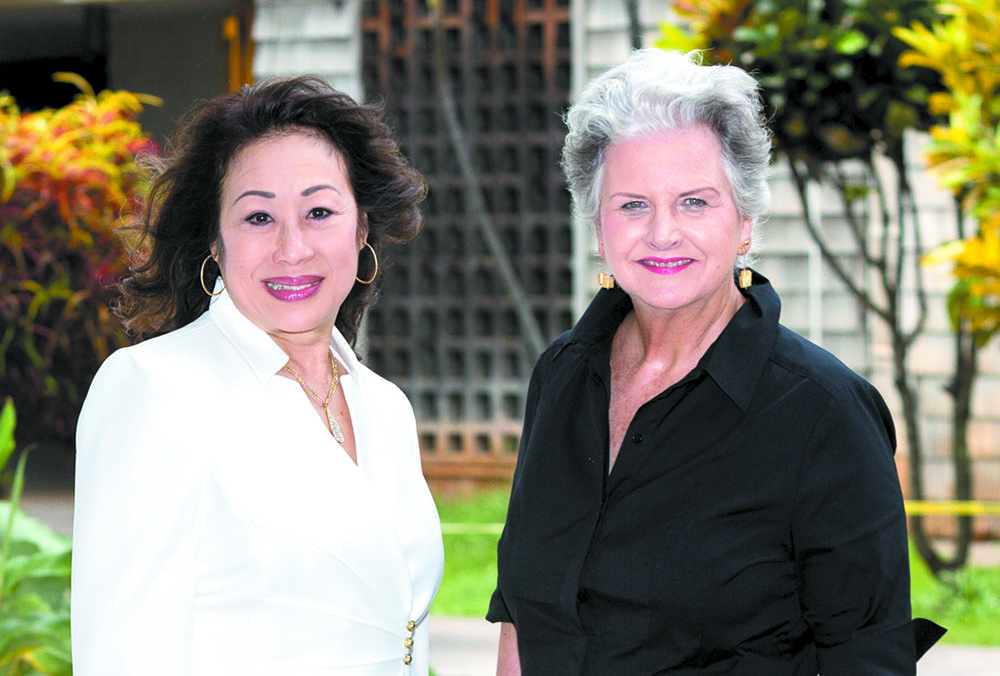
Linda Gee and Paula Rath on the grounds of Palama Settlement. The Gee and Rath families will be honored Oct. 1 at its Malama Palama fundraiser PHOTO COURTESY PALAMA SETTLEMENT
One of the hundreds of families it has helped through the years is the Gees, who will be honored Oct. 1 along with the Rath family at a fundraising gala at Sheraton Waikiki. The family patriarch, Bill Gee, was athletic director and basketball coach at the settlement, but it was the influence he had in his youth that really transformed his life path.
“For many kids his age who went on to become legislators, leaders, community advocates and professionals of all kinds, it was their salvation,” says Bill’s daughter Linda Gee. “That is what it was meant to be. It gave them something to do besides go around to the back of the building and smoke pakalolo or drink, which was happening while he was in the building.
“Sports, for many, is what led to them taking the right path and saving them from life like it is for some many kids in this neighborhood. Whether it was Chinese, like it was in his day, or Micronesians like it is today, the common thread is they are poor as church mice. For them to choose something that wasn’t way easier in terms of money, like steal a car or whatever, it took a lot of desire for something better.”
The list of success stories coming out of the settlement is one that would make the most prestigious of institutions swell with pride. It has produced more state governors (two) than all of the private schools in the state combined (one). World-famous heart surgeon and all-state athlete Richard Mamiya first learned his life skills at this little oasis in the heart of Kalihi. Even one of Hawaii’s top philanthropists and dentist, Dr. Lawrence Tseu, was imbued with his passion for dentistry while receiving free care for his teeth there at Palama.
But for each of these kids who went on to revolutionize open-heart surgeries like Mamiya, or lead our state like Ben Cayetano and George Ariyoshi, there are thousands more who simply led a better life because of the effect the settlement had on their lives.
“We did some oral histories in the 1980s, and what we heard time and again was ‘I would have been in prison if it wasn’t for Palama Settlement,'” says Rath.
Today, kids can participate in its Pakalea Program, where their studies earn them time on the field or in the gym, computer labs and tutors can help them with schoolwork, and midweek art programs give them a creative outlet on the day school ends early.
“They get out of school early on Wednesdays, and that is big chunk of time for them to get into trouble,” says Rath. “So they can come to art class done by Hawaii Potter’s Guild or Watercolor Society, or just come to the Blackfield Center, which is a safe place for them to hang out, watch movies, watch TV, play foos-ball or billiards.”
While its primary mission is to keep kids from finding trouble in the first place, it also serves as a Sherpa to guide those who have lost their way. Since 1970, its In-Community Treatment Program has served adjudicated youths who are struggling with the traditional school environment. They not only help them with their schoolwork, but also counsel them on making wise life choices and eliminating socially destructive behaviors.
It provides all these services without a name sponsor or large endowment, like those helping other outreach groups such as Kroc Center or Henry and Jeanette Weinberg cadre of service providers.
To help underwrite its costs, it is sponsoring its fourth annual Malama Palama fundraiser Oct. 1 at Sheraton Waikiki. It will feature a silent auction and reception prior to dinner. Al Waterson will emcee the gala, with entertainment provided by Kit Ebersbach and Starr Kalahiki. Cost for a table of 10 starts at $2,500 and individual seats are $250 per person. To RSVP or for more information, call 848-2532 or go to palamasettlement.org/malamapalama2016.

